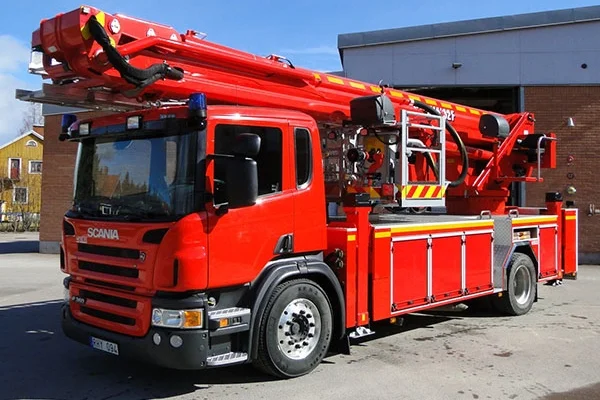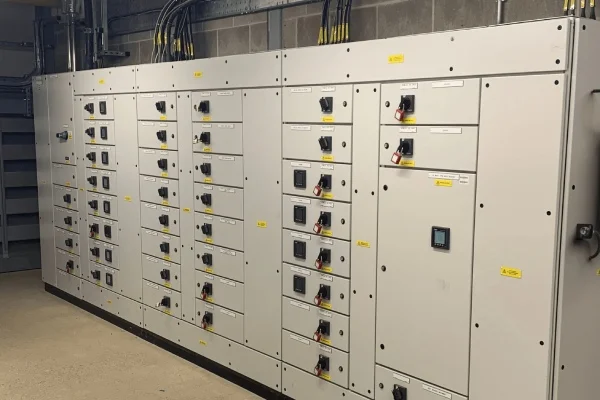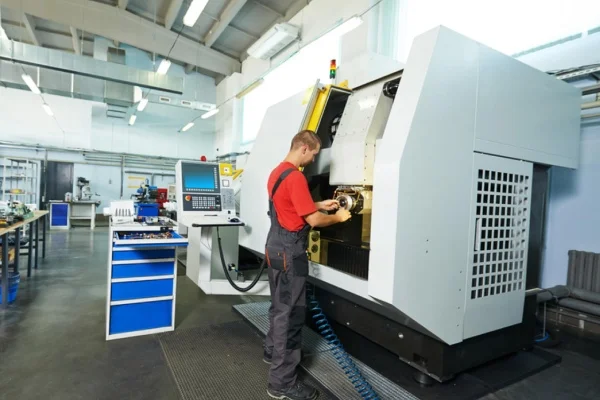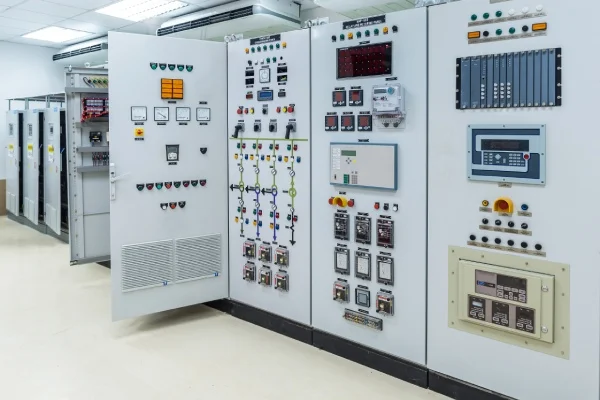HTAN is one of the leading manufacturers of industrial hinges, handles and latches in China.
After 10 years of growth, the factory has developed a customer-driven business model, focusing on making hinges based on customer needs. With our own production experience, we aim to deliver products that exceed customer expectations. Seeing the look of surprise on our customers’ faces—now, that’s pretty cool to us
Established in 2015, we are a Chinese company specializing in the production of industrial hardware fittings. we have experience in R&D, design, and production of hardware fittings in many fields.
HTAN’ team of engineers supports the customer in the design phase, both aesthetic and technical, and gives its various customers the chance to boast exclusive designs either temporarily or permanently.
For more detailed information about us, please click about us.
Want to know how to compress lead times?
The Ultimate Guide
Everything Your Need to Know About Hinges
With modern technology advancements, hinge design has not only made life more convenient and comfortable, but also enhanced the functionality and reliability of various applications. From simple door hinges to advanced kinematic solutions like mechanical spring balancing and spring-assisted technology, the types and uses of hinges have become more diverse and specialized. In this article, we’ll explore different types of heavy-duty hinges and their applications in commercial design, manufacturing processes, materials, and purchasing considerations, to help you make an informed decision.
Hinge Manufacturing Process
- Raw Material Preparation: Materials are selected based on the hinge’s intended use. For household use, cold-rolled steel is typical, while for humid environments like kitchens and bathrooms, 304 stainless steel is preferred. After purchasing, materials undergo strict inspections for hardness, toughness, and purity.
- Cutting and Shaping: Materials are cut into suitable blanks using saws, laser cutting machines, or other equipment based on design specifications. Specially shaped components are precisely cut using CNC machines.
- Stamping: Custom stamping molds are used to form the blanks into the desired shape under pressure, and installation holes and other details may also be stamped out at the same time.
- Bending: The bending angle and position are defined, and a bending machine is used to form the parts at the specified angle, ensuring smooth hinge operation.
- Welding Process (if needed): For hinges requiring welding, appropriate methods and materials are selected, like TIG welding for stainless steel. Parts are carefully positioned and welded, followed by cleaning and polishing.
- Surface Treatment: The hinges are cleaned to remove grease and dust, then electroplated (nickel, chrome, zinc) or coated (paint or powder coating) to enhance corrosion resistance and appearance.
- Assembly and Testing: Components are assembled according to the design and secured with screws or rivets to ensure a tight fit and smooth movement. The hinge’s opening angle, flexibility, and damping effect are tested.
- Packaging and Quality Control: Finished products are packed with appropriate materials and labeled with relevant information. Random inspections check for appearance, size, and performance, and any defective products are reworked or processed to ensure factory quality.
Types of Materials for Hinges
- Stainless Steel: Excellent corrosion resistance, making it ideal for humid environments or places where mild acidic or alkaline substances are present, extending the hinge’s lifespan.
- Iron with Blue Zinc Coating: These hinges undergo a blue zinc coating over stainless steel, combining stainless steel’s corrosion resistance and strength.
- Zinc Alloy: Lightweight, corrosion-resistant, wear-resistant, and heat-resistant, zinc alloy increases product longevity.
- Aluminum Alloy: Lightweight and strong, suitable for heavy-duty applications. It’s also corrosion-resistant, wear-resistant, and won’t rust easily.
- Plastic: Lightweight, corrosion-resistant, and rust-proof, plastic hinges are a practical choice.
- Alloy: A blend of two or more metals, offering high strength, wear resistance, and corrosion resistance.
Types of Hinges and Their Features
Spring Hinges
- Auto-close: Contains a spring mechanism that automatically closes doors or cabinets, making them convenient and quick. Ideal for places where doors need to close frequently.
- Moderate Force: Designed for doors of varying weights, it offers a balanced opening and closing force.
- Limited Adjustability: Adjustments are more limited, and precision during installation is crucial.
Concealed Hinges
- Aesthetic: Nearly invisible when closed, often used in modern, minimalist, or high-end custom furniture.
- Complex Installation: The hidden design makes installation more intricate and requires precision.
- Varied Load Capacity: The load-bearing capacity depends on the design and material and can handle both light and heavy doors.
Heavy-duty Hinges
- High Load-bearing: Designed to handle heavy doors such as large wooden doors or industrial cabinet doors, made with high-strength materials.
- Stability: Ensures smooth opening and closing without sagging, ideal for safety-critical applications.
- Larger Size: Components are larger than standard hinges, so space considerations are important during installation.
Detachable Hinges
- Easy to Install and Remove: Designed for quick, tool-free installation and removal.
- High Flexibility: Suitable for rearranging furniture layouts or reconfiguring equipment, but may have a lower load-bearing capacity.
Cold Storage Hinges
- Low-Temperature Resistance: Made of special materials to resist brittle behavior and deformation in low temperatures.
- Rust Resistance: Designed to withstand high humidity and condensation in cold storage, with surface treatments to prolong life.
- Good Sealing: Prevents cold air from leaking and hot air from entering, helping maintain stable cold storage temperatures.
Torque Hinges
- Adjustable Torque: Allows you to control the opening and closing speed and force, keeping doors in place at any angle.
- Flexible Application: Used in displays, equipment cases, and other environments with special opening, force, or positioning needs.
Applications of Hinges
Furniture Industry
- Cabinets: Commonly use standard or damping hinges. Damping hinges provide quiet, slow closing, preventing noise and damage. Special large-angle hinges may be needed for corner cabinets.
- Wardrobes: For hinged wardrobes, regular hinges suffice, but sliding doors require track-type hinges. High-end wooden wardrobes may use concealed hinges for a clean, upscale look.
- Drawers: Typically use side-mounted hinges to support weight and ensure smooth operation. Some may also have a self-closing function.
Construction Industry
- Interior Doors: Standard hinges are used for most residential interior doors, while heavy-duty hinges are needed for large wooden doors to prevent sagging.
- Exterior Doors: Stainless steel hinges are commonly used for exterior doors due to their corrosion resistance and strength. For large commercial building revolving doors, special rotating hinges are used for balance and stability.
- Windows: Hinges vary depending on the window type. Regular hinges are used for casement windows, while friction or stay hinges are used for hung windows.
Industrial Sector
- Distribution Cabinets: Require hinges with good conductivity (if metal) and durability, often using detachable hinges for easy maintenance or replacement.
- Industrial Equipment Cabinets: Heavy-duty hinges are essential for doors on large equipment, with the ability to withstand vibration and heavy loads.
- Storage Equipment: Various hinges are used, with track-type hinges for large roll-up doors in warehouses.
Transportation Sector
- Automobiles: Car door hinges are designed to withstand vibrations, impacts, and the vehicle’s weight, with high wear resistance and strength.
- Trains and High-Speed Rail: Train car door hinges must support high loads and frequent door openings and closings. Newer trains may use smart hinges with automatic sensing.
- Ships: Large, corrosion-resistant hinges are used on doors and hatch covers, able to withstand the harsh marine environment.
Electronics Sector
- Computer Cases: Hinges used for side panels and front panels are small and lightweight, ensuring stability while providing easy access for hardware upgrades.
- Electronic Instrument Cases: Hinges used in precision instruments allow smooth, controlled opening and closing, with adjustable angles for ease of use.
When Purchasing Hinges, Consider
Quality and Material
- Material Type: Choose based on the environment (e.g., stainless steel for humid areas). Check material quality to ensure durability.
Size and Specifications
- Fit: Make sure the hinge matches the size of the door or cabinet.
- Custom Specifications: Some doors may require special hinges, such as those with larger opening angles or specific installation hole positions.
Functional Features
- Opening Angle: Determine the required opening angle for your application.
- Damping Function: Opt for damping hinges for quieter and smoother operation.
Load-bearing Capacity
- Choose hinges that can support the weight of your doors or cabinets.
Cost and Value
- Compare prices and consider the value based on quality and functionality.
Appearance and Surface Treatment:
- Choose hinges that match the décor or equipment design. Surface treatments like plating or coating can enhance appearance and durability.
HTAN, founded on August 6, 2015, is a high-tech enterprise integrating R&D, manufacturing, sales, and service. The company mainly produces stainless steel handles, hinges, locks, latches, door bolts, sealing gaskets, and supporting rods. With a technical R&D team of over 20 people, HTAN has passed ISO9001 certification and offers comprehensive solutions from design, mold opening, manufacturing, production, shipping, to after-sales. The company holds 20 patents, and its products are widely used in special vehicles, heavy-duty trucks, rail transportation equipment, telecommunications, power equipment, medical devices, industrial automation, and marine applications.
The application examples of hinges









Application Industries








Frequently Asked Questions
Contact to Get Free Sample
What’s our customer’s Opinion?
We’ve been using HTAN” hinges and latches for ourelectrical cabinets nearly 10 years, and the quality hasconsistently impressed us. Their products are robust, performwell under stress, and have truly simplified our productionprocesses. The HTAN team is also remarkable for theirattention to detail and quick response times.
Switching to HTAN for our network communicationcabinets was a game changer. The precision and aesthetics oftheir hinges and latches have significantly improved the overalldesign and usability of our products. Their team’s expertise andcommitment to excellence are evident in every interaction
“From the initial design consultation to the final delivery, ourexperience with HTAN has been outstanding. Theirproactive customer service and the technical support theyprovide have made them an indispensable part of ourproduction line.









